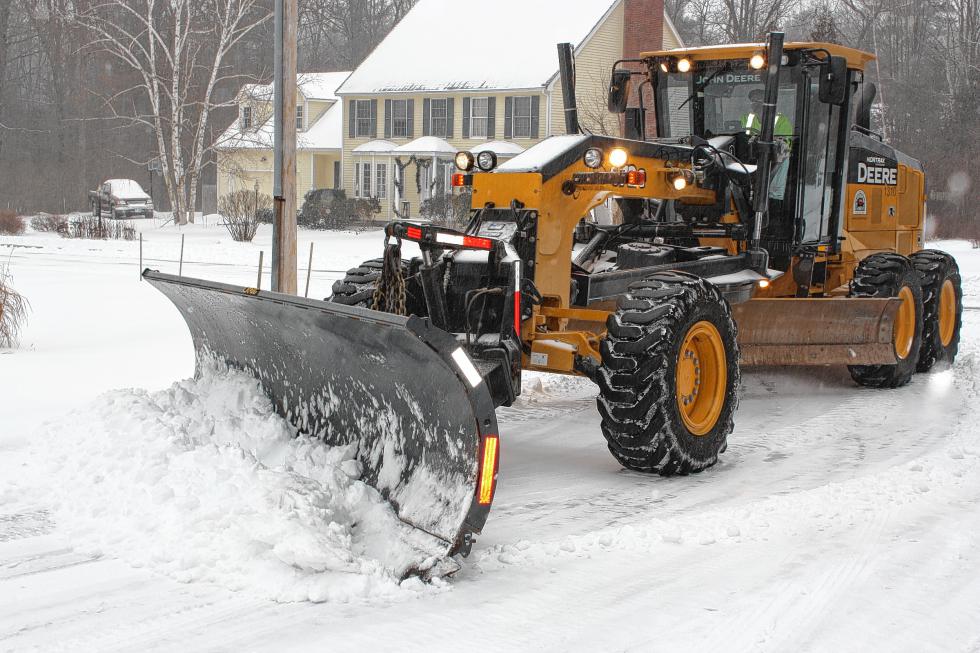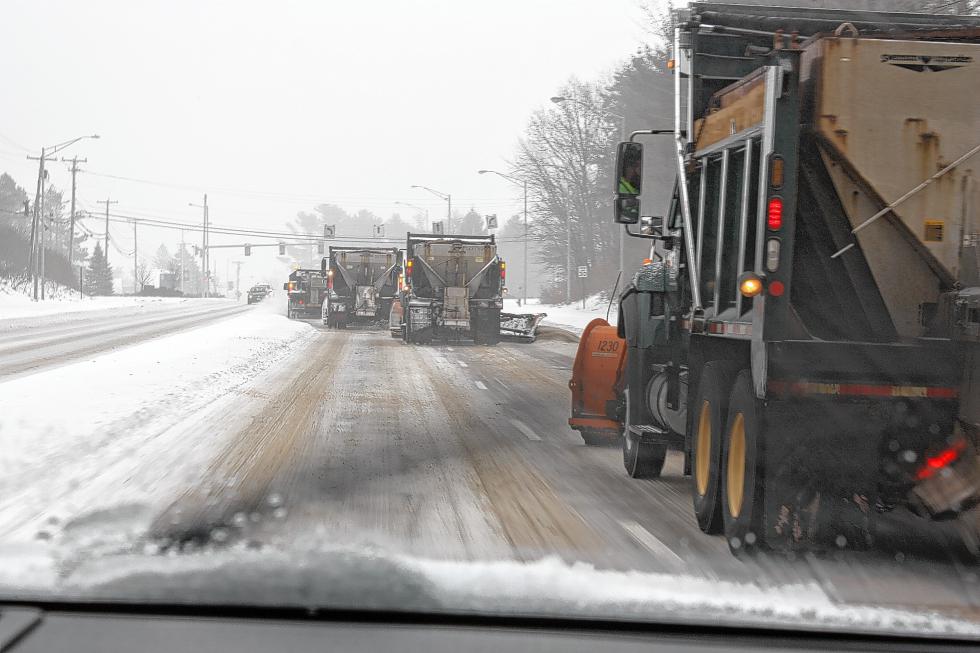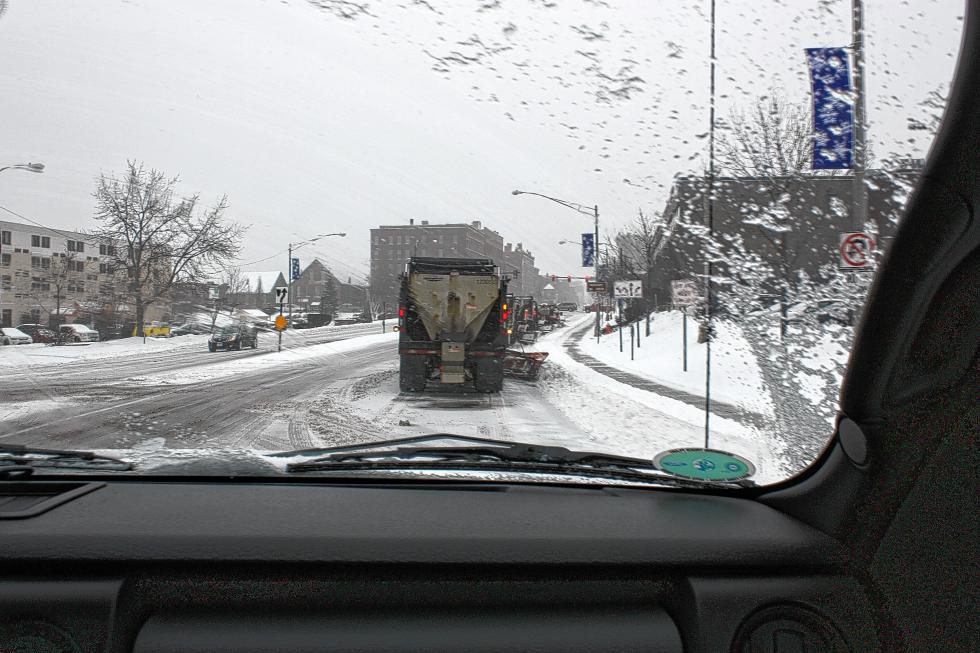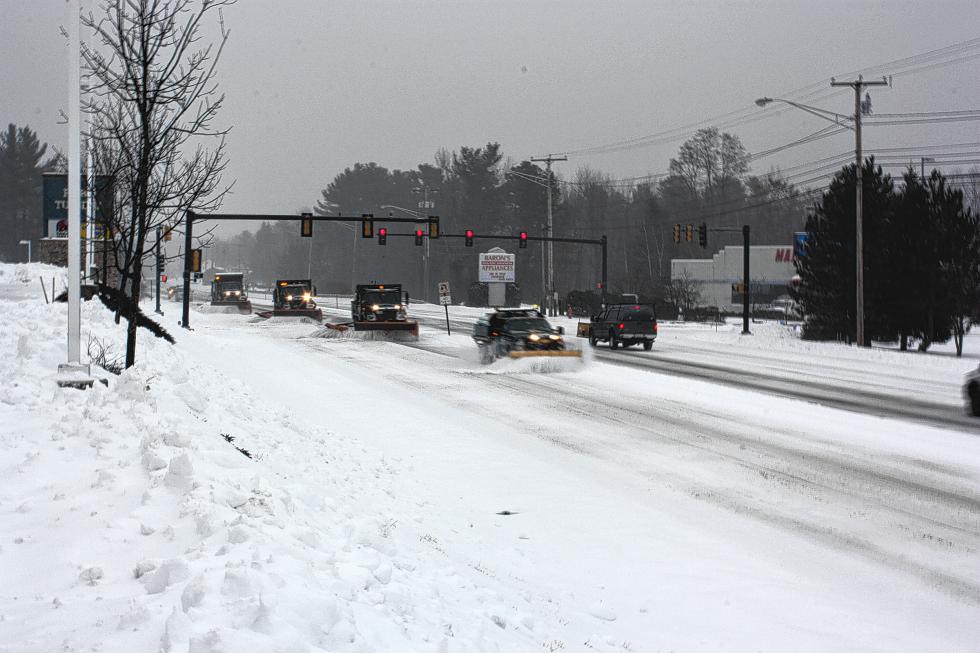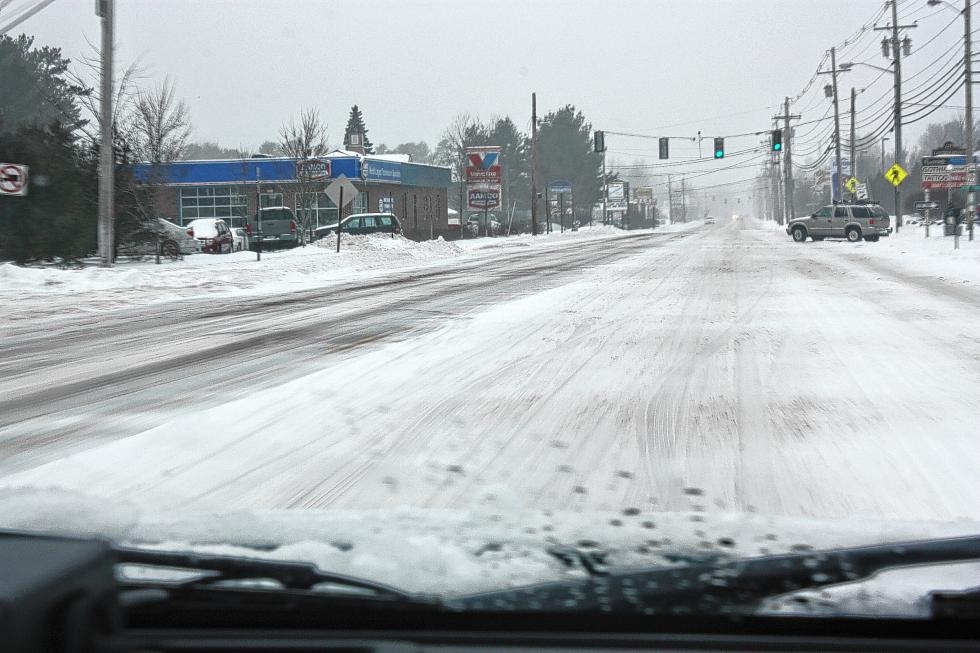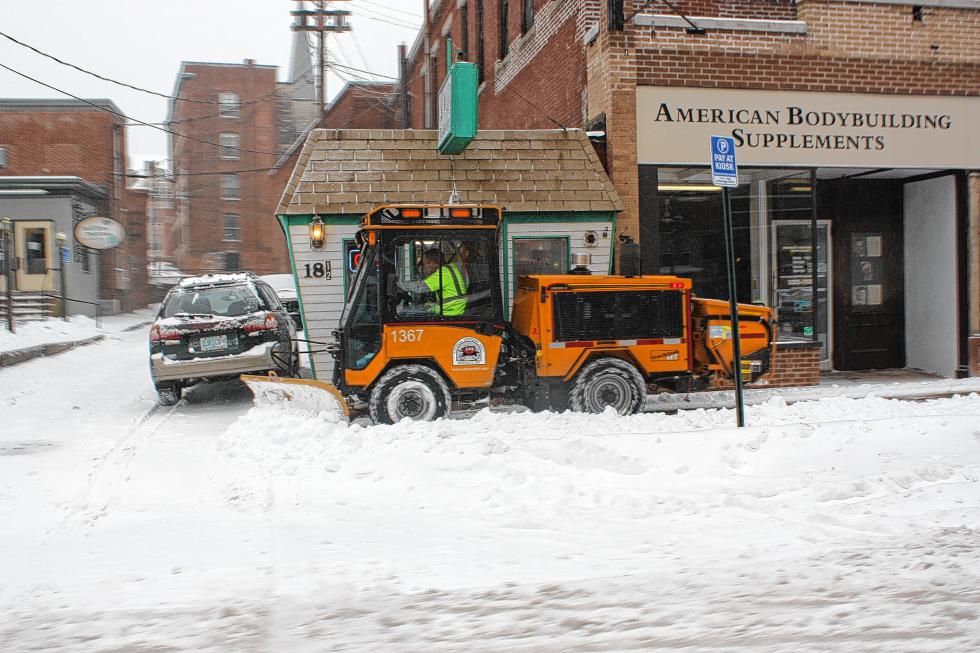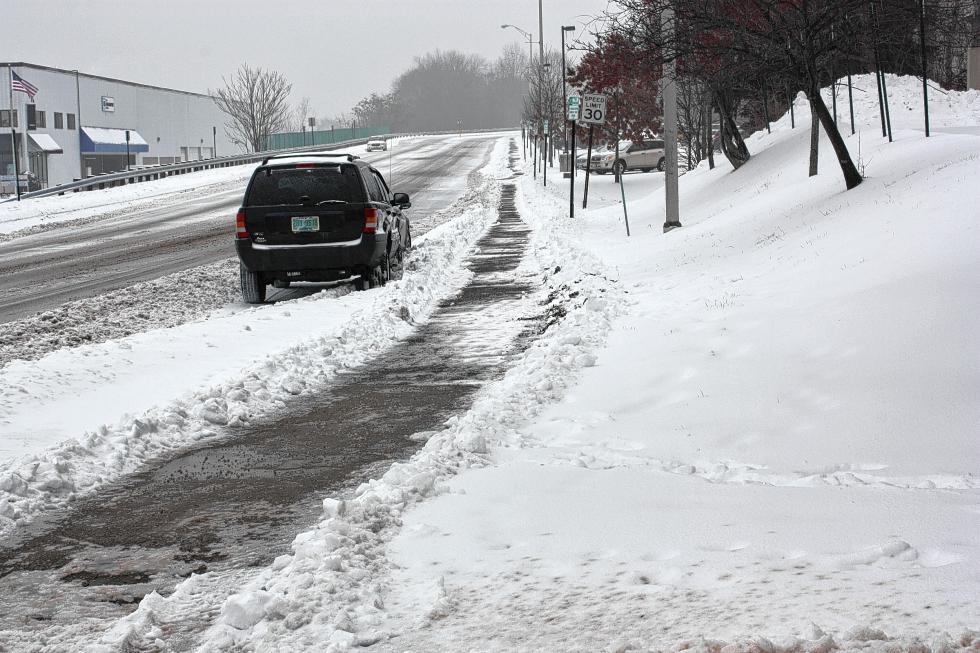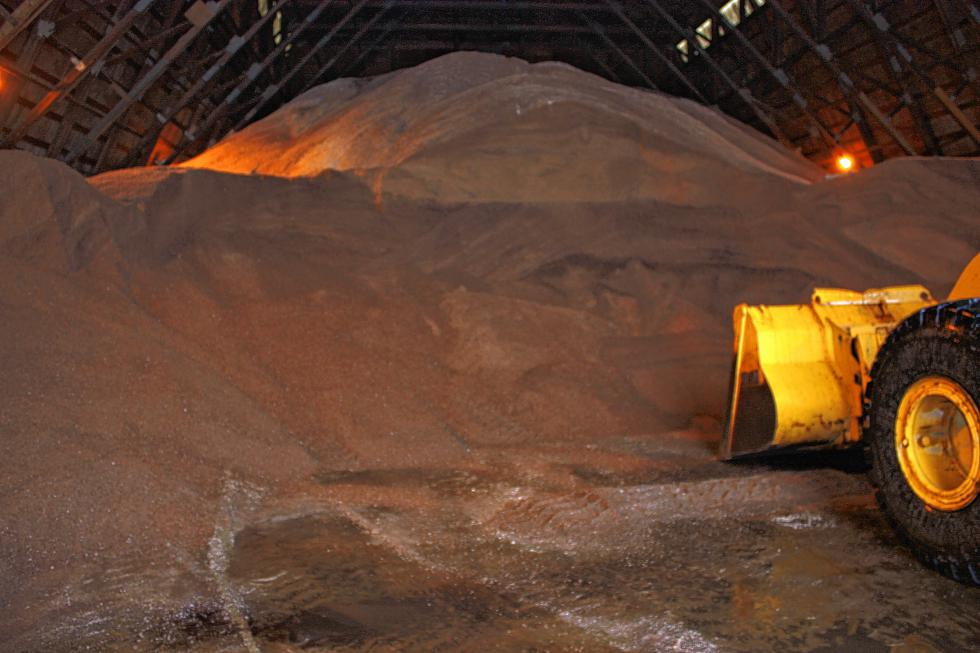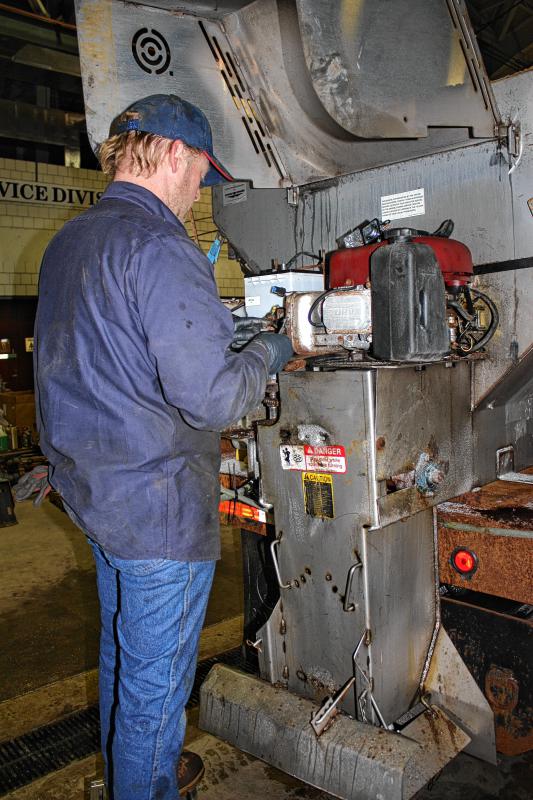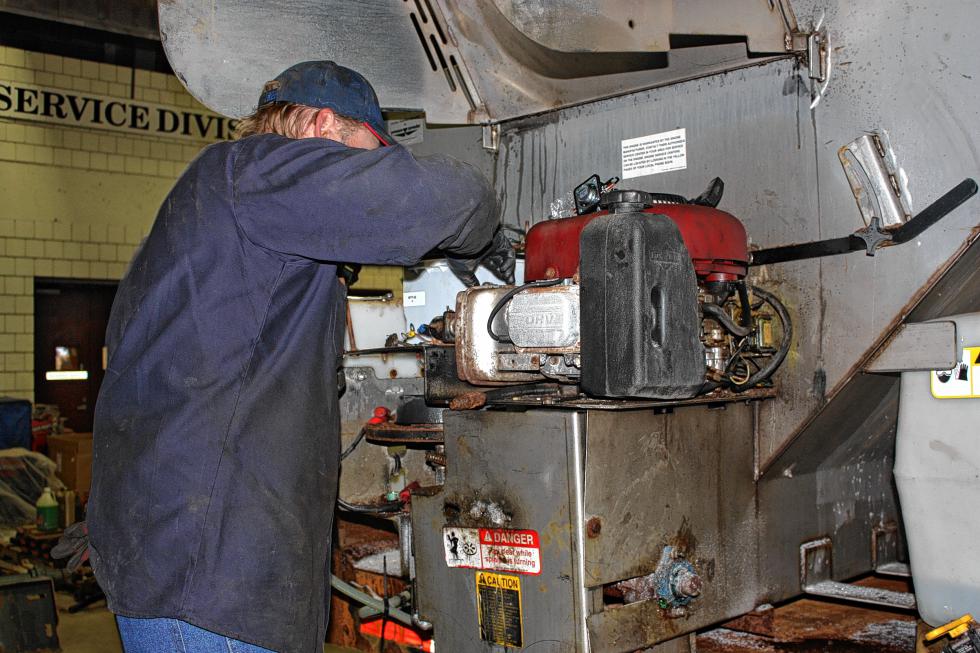If you’ve looked out your window lately, you may have noticed that it has (finally) snowed. We didn’t get a ton last week – thankfully – but it was enough to mess up the roads and just be a general nuisance to everyone trying to navigate through it. But, as luck would have it, the hard workers at the General Services Department were all over it like white on snow, as they are every time there’s a storm around here.
Director Chip Chesley, who describes himself as the Bill Belichick of the General Services team, was nice enough to let me tag along during the operation last week. Since city rules don’t allow for more than two people in a plow truck at a time (and each truck already had two people, so there was no room for me anywhere), I hopped in a foreman’s truck with Fred Schaefer, who acted as my chauffeur for the day.
If Chesley is the Belichick of the team, Schaefer is kind of like the Troy Brown. He’s an engineer tech 2, a job that handles overseeing paving, but he pretty much does “whatever they ask me.” Sometimes he plows, sometimes he works in the office – and sometimes he even drives reporters around the city. Talk about a super-utility guy.
Our mission was pretty straightforward: Try to locate as many pieces of snow equipment as possible and see how they’re doing out there.
The key word here is try. That’s because during last week’s storm, the first real snow of the year, there were 23 pieces of equipment (mostly trucks) out on the roads, and they were constantly on the move. Turns out, Schaefer and I were just chasing moving targets all day.
But that’s okay, because we didn’t need to actually see every single vehicle in the fleet doing its thing. It’s quite possible that one Ford pickup plowing snow looks incredibly similar to another Ford pickup plowing snow, so we visited several different types of apparatuses, including a road grader, loader, dump trucks and a couple different sidewalk-clearing vehicles.
And the city needed every last one of those contraptions.
“This is the worst-case scenario,” Chesley said about the storm, which was full of ice, rain and freezing rain as well as snow. “With freezing rain, you don’t want to go to bare pavement because it will create a sheen.”
The trick is letting some snow linger for a little while, Chesley said. It acts as a sponge, soaking up all the rain. Then, after it’s good and saturated, the plows come through and hit it all at once.
As I found out over the course of the day, dealing with snow involves lots of little tricks and techniques.
For instance, in order to clear the multi-lane Loudon Road, a convoy of four trucks fans out across a whole side of the road working together to move the snow. One truck pushes snow to the side, then the truck behind that pushes it over farther, then even farther. The caboose throws some salt or sand.
By the way, speaking of that salt. The city has lots of it. Tons, even. In fact, about 6,000 tons of salt are ordered every year. And yes, that is tons, not pounds.
I got to see where they keep Mount Salt (nobody calls it that, I just made it up), and it was a pretty overwhelming sight to see. The brownish, reddish tint to it, which comes from a brine they add to it, really makes it looks like a mountain.
Just as I was leaving the salty heap, I saw a small dump truck pull up to refill. There’s a ramp outside the garage where the salt is stored that puts the loader above the truck to make for quick and easy fill-ups. Those General Services folks really do run like a well-oiled, snow-slaying machine.
The machine I was in for the day, a Ford F-150, was equipped with a two-way radio and an electronic tracking system that monitors things like the truck’s speed, location and whether seat belts are fastened. Confession: There were two separate instances where I got out of the truck to take a picture and failed to put my belt on as soon as I got back into the truck after, setting off the little beep and triggering a write-up, Schaefer said. Sorry, General Services! It was my fault, not his!
The reason for putting the tracking equipment in the vehicles is not because the drivers can’t be trusted, it’s just about accountability.
And it’s not like there’s one person sitting in a command center with a giant monitor watching all these little blips in real time as they move around the city, calling out orders from a wireless headset – although that would be totally awesome. It’s more like, “If somebody calls us in the morning saying a plow went by their house in the middle of the night going 60 miles an hour, we can check and see what the actual speed was,” Chesley said.
We didn’t come close to hitting 60 when we were out last week, but that probably would have been terrifying considering the conditions, and the fact that we were on regular city roads, not highways.
And although we didn’t have any problems whatsoever – we didn’t get stuck, slide off the road, crash or break anything – that’s not always the case.
Automobiles are pretty much the most complex, technologically advanced consumer products of all time, and as such, they tend to have problems from time to time – especially when you’re ramming them into snowbanks for 16 hours a day (the typical length of a snow shift).
That’s why General Services has good mechanics. Unlike the guy who fixes your catalytic converter at (fill-in-the-blank) garage, these mechanics need to know how to fix all types of vehicles – pickup trucks, dump trucks, fire trucks – pretty much anything with wheels and an engine.
As I was about to head out, Chesley brought me to the maintenance bay, where Don Weaver was working on fixing a starter solenoid to a sander. Luckily, Weaver said the job would only take about an hour or so, short enough that the crew operating it didn’t have to abandon it for the day and go on to something else, which can happen if more serious repairs are needed.
Bob Lebreux, the fleet manager, oversees the vehicles, and is always busy during storms. Chesley, who considers himself Belichick (only Chesley would take the ball in overtime), said Lebreux is like the defensive coordinator of the team. The offensive coordinator is Jim Major, the highways and utilities superintendent. Together they help manage a championship-caliber team of more than 50. The football analogies became more and more relevant the more I learned about everything.
One thing we wanted to check out with the first storm was how the new Main Street would be handled. With the now-famous bumpouts jutting out into the street and the addition of brick and stone to the driving surface, some wondered whether plowing would be more difficult.
If it was, there was no evidence of it, as Main Street looked pretty clean and undamaged by about 9:15 a.m. Tuesday. The street was relatively clear and two small vehicles were cleaning up the sidewalks quite nicely. One sidewalk vehicle even had the capability to plow, snow-blow and drop sand and salt. There’s a small dump truck in the fleet that acts as a support vehicle to this sidewalk cleaner, carrying salt to refill the spreader and gas to refuel the tank.
So as you can see, the whole operation really is incredibly coordinated, organized, efficient and team-oriented.
Between the planning, execution and maintenance, this team excels in all three phases of the game. They have a good chance to go all the way this year.

